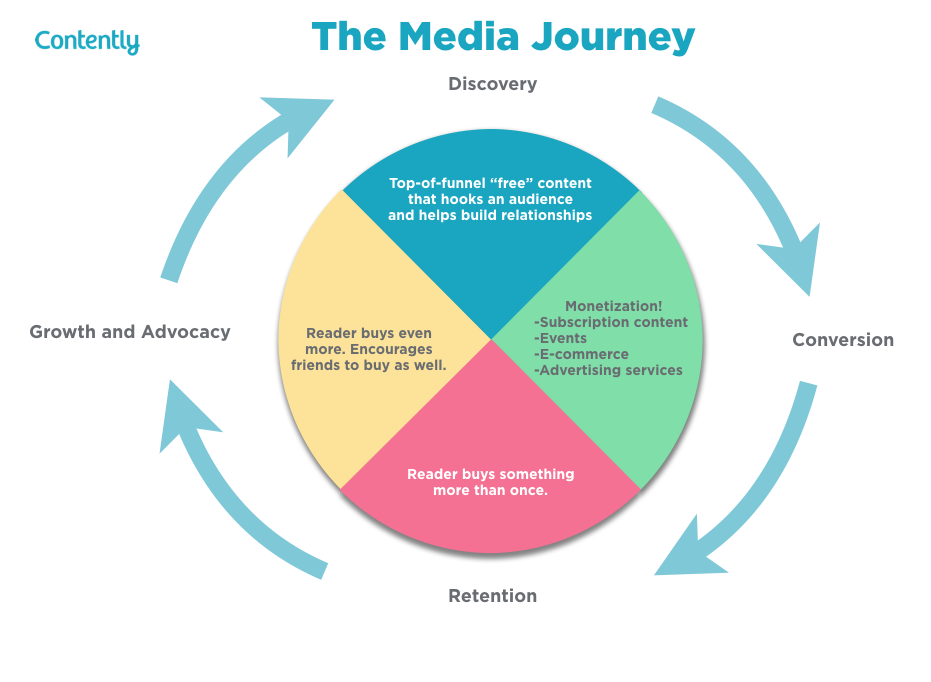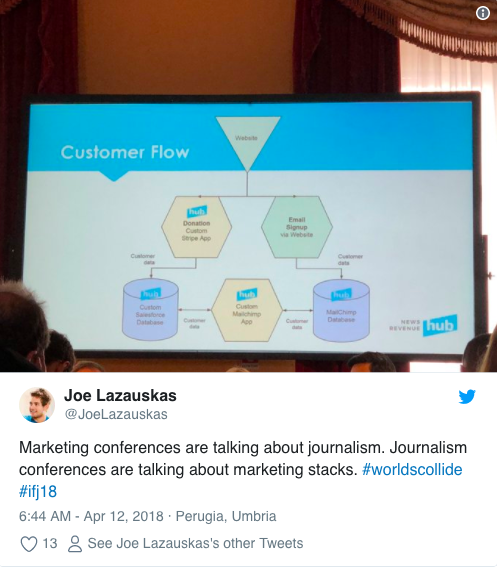Normally, I spend my time at content marketing conferences listening to marketers talk about adopting journalism principles. Instead, it’s trying to be a “top-of-funnel” marketing tool for building relationships with people and getting them to pay directly for subscription content, events, advertising services, or some other product. Funny enough, marketers and media companies are now arriving at an eerily similar marketing model. As a result, those publishers came to a realization: The best way to make money is to build relationships with a smaller group of readers, who are then willing to buy something. For publishers like the ones in The Hub, that “something” people buy is a membership that grants access paywalled content. For FT, the focus isn’t on growing its traffic—it’s deepening those relationships with readers. “We’re now moving toward getting readers who are already paying for content to continue paying for content and pay more for content.” In turn, FT treats its content like a product. But it still follows a similar model of monetizing readers. According to Narisetti, Gizmodo’s CEO, half of the company’s revenue comes outside of traditional digital advertising like display and programmatic. '” Leaders like Kaplan and Narisetti agree that there’s no “right” revenue stream for media companies.
I recently sat in on a panel at the International Journalism Festival in Perugia, Italy, listening to journalists talk about their marketing stacks. Maybe it was the jetlag, but I felt like I was in bizarro world. Normally, I spend my time at content marketing conferences listening to marketers talk about adopting journalism principles. Instead, here I was, listening to journalists talk about their marketing strategies.

This is a slide you’d normally see at a demand generation session—except there’d normally be 27 more completely unnecessary arrows and boxes, and the terms “synergy,” “value-based,” and “co-creation” thrown in at random.
The slide was presented by Mary Brown, CEO and founder of The Hub, an initiative that helps news orgs productize their content and drive memberships. The Hub is riding the wave of a larger paradigm shift in the media industry, moving away from the perception that content is a pageview vessel for delivering advertising. Instead, it’s trying to be a “top-of-funnel” marketing tool for building relationships with people and getting them to pay directly for subscription content, events, advertising services, or some other product.

If that sounds a lot like content marketing, that’s because it is. Funny enough, marketers and media companies are now arriving at an eerily similar marketing model.
The Facebook effect
Hot take: Facebook tanking publishers in its algorithm earlier this year may be the best thing to ever happen to media companies. Why? Because it made them realize something important: the page view rat race isn’t winnable.
“Most publishers abandoned reader revenue and thought they’d build revenue on scale, and thought things would be great,” Raju Narisetti, CEO of Gizmodo Media Group, explained on an IJF panel. “But it hasn’t been great.”
The first half of this decade, VC money flowed…

COMMENTS